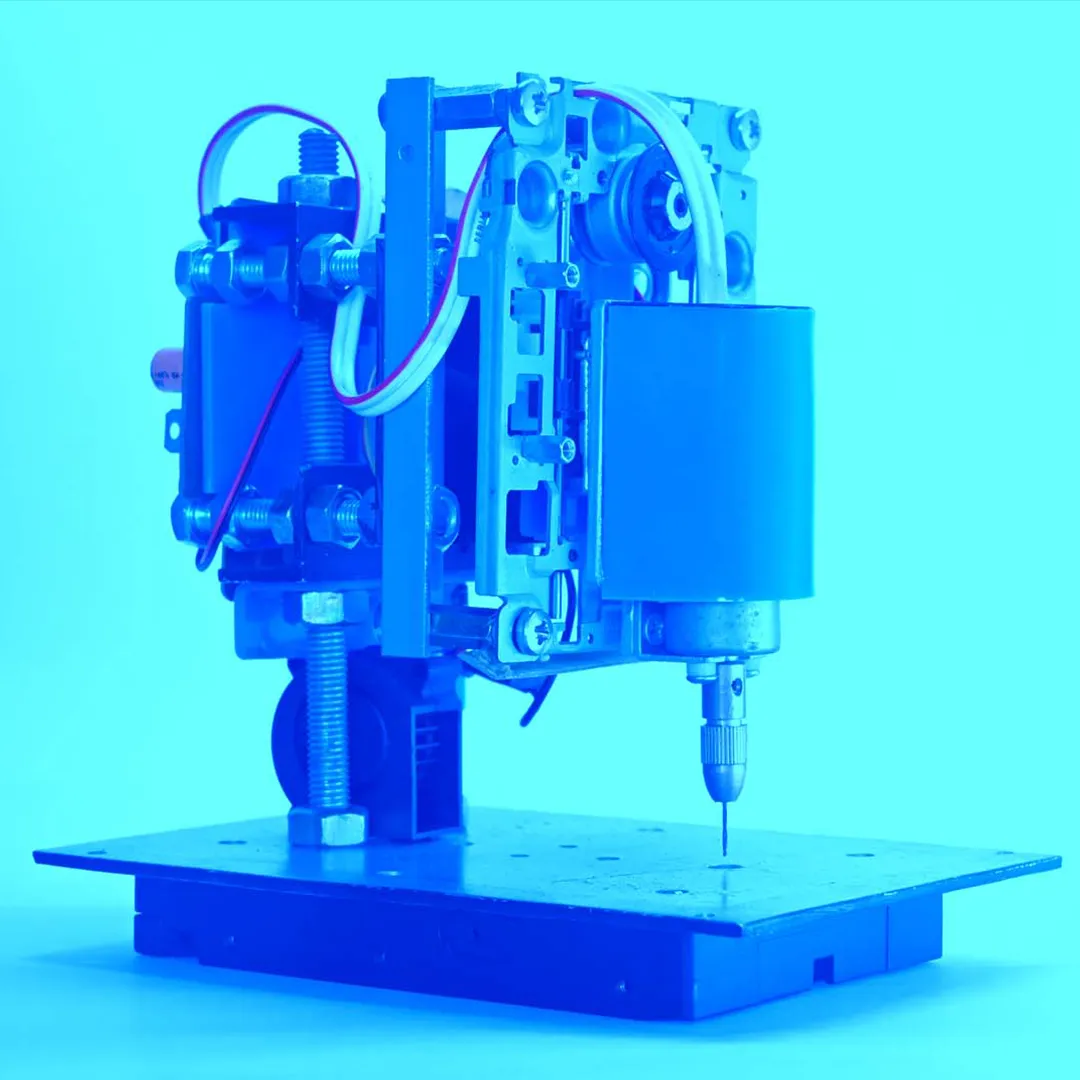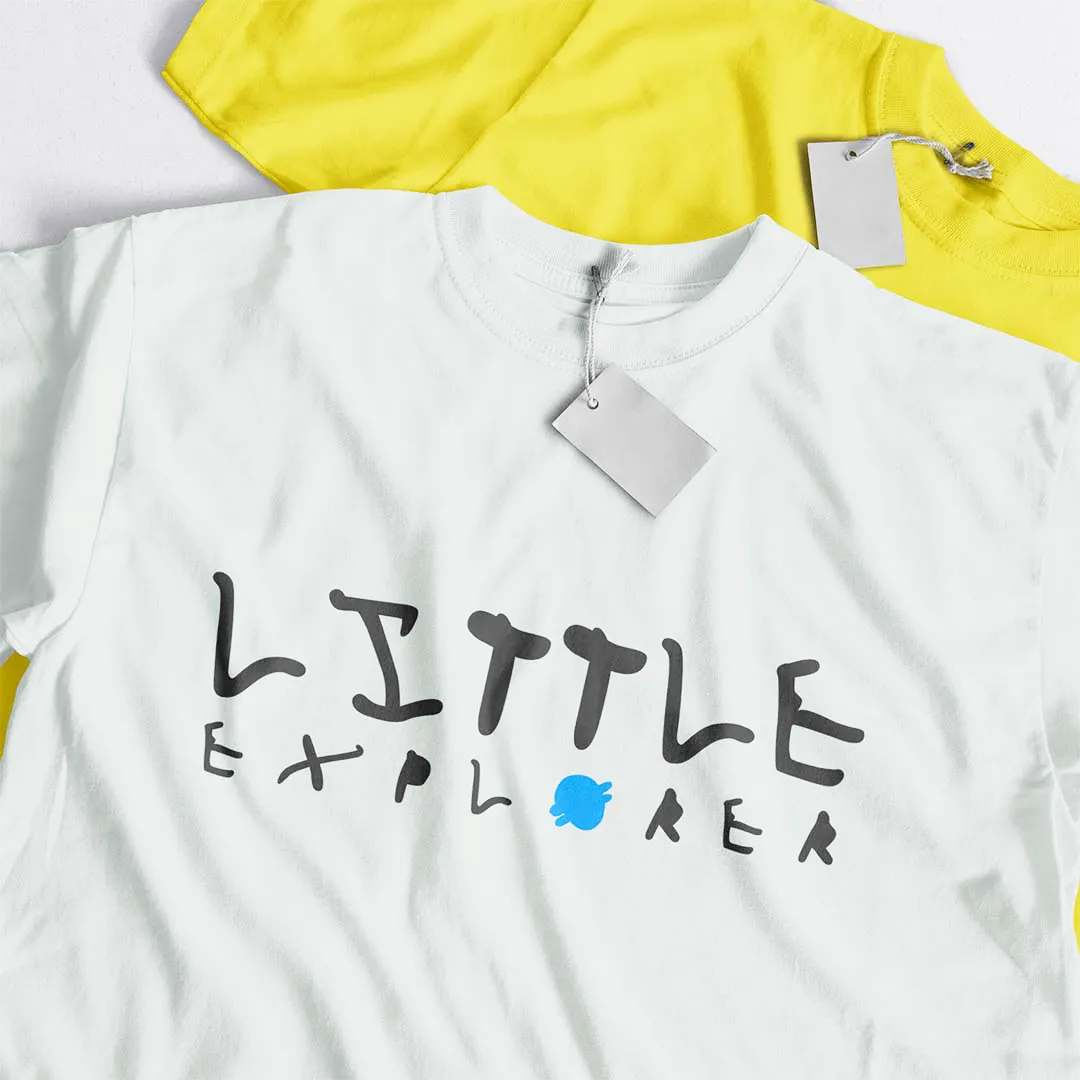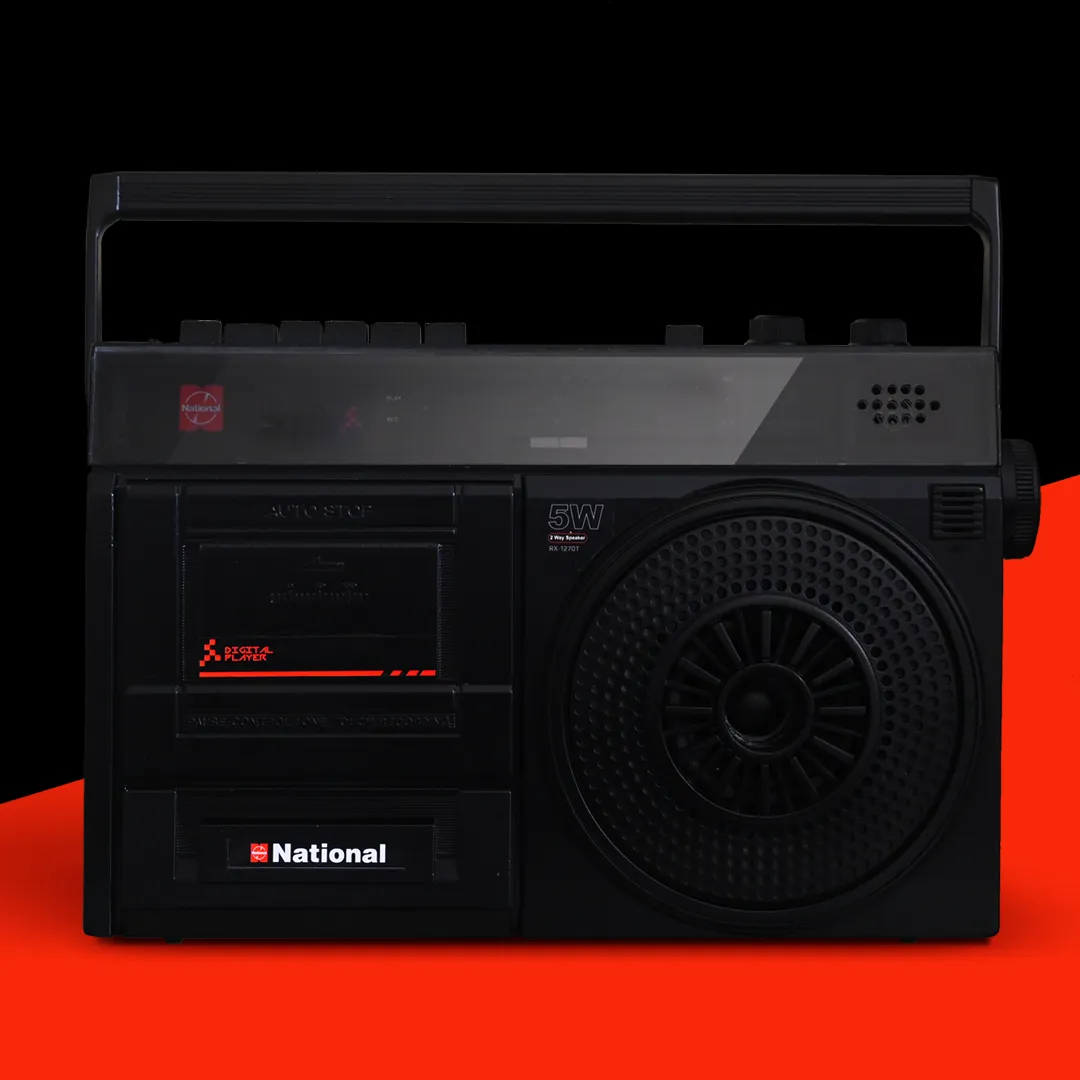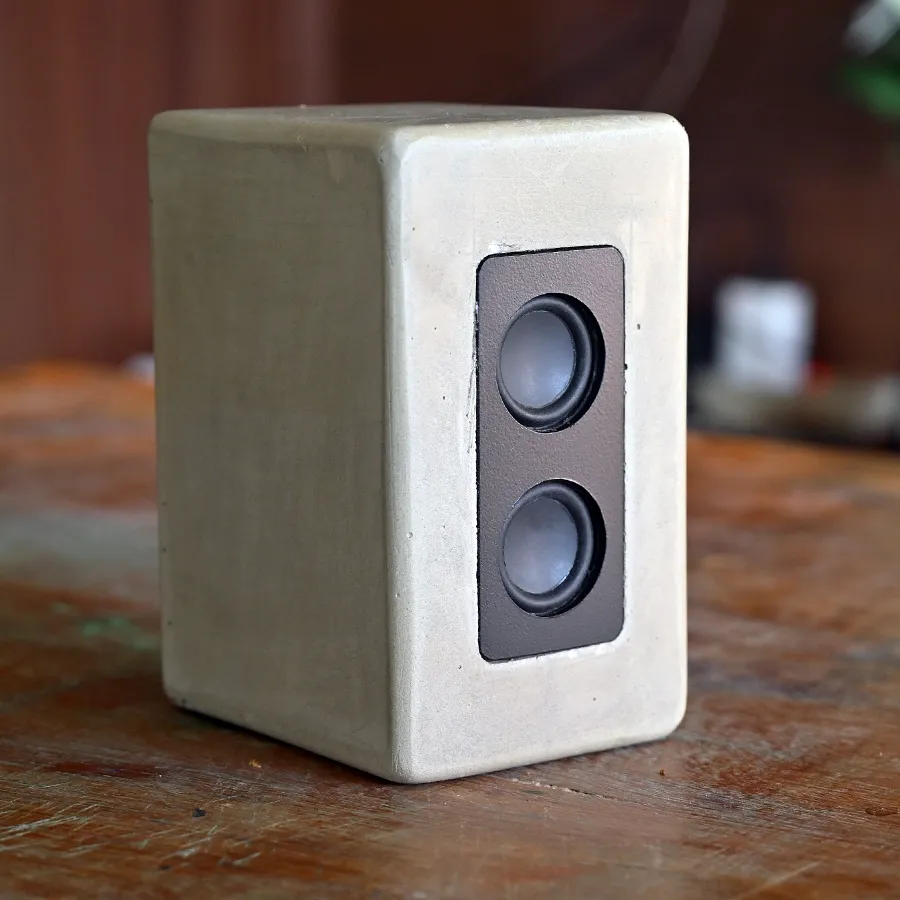Transforming cement into elegant home décor
Handcrafted concrete pot and Bluetooth speaker enclosure
In the world of DIY crafts, cement transforms into artful, functional pieces. In this DIY cement casting and molding project, I crafted two items: a flower pot and a Bluetooth speaker enclosure. I used foam board molds in two thicknesses (4 mm and 2 mm) for flexibility, allowing for detailed, smooth finishes. From shaping to final touches, I’ll share a step-by-step process for crafting these pieces.
1. Crafting a medium-size pot
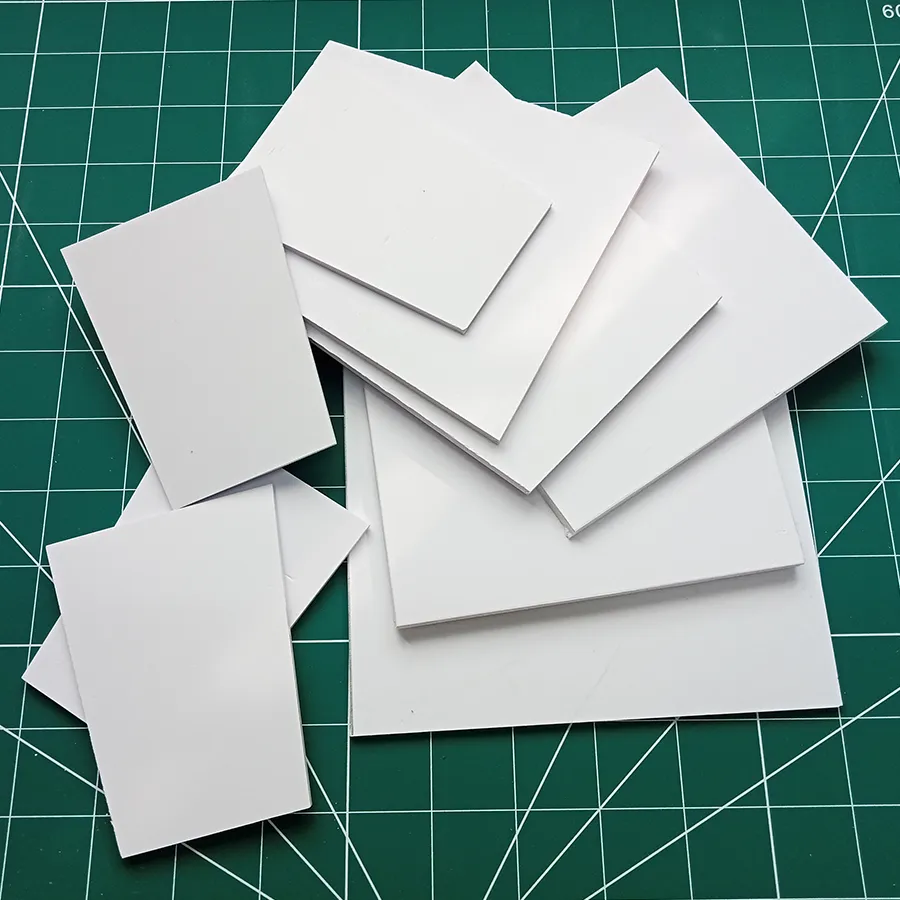
Design and Structure Planning
I started with a rough sketch to conceptualize the pot’s form and function. After finalizing the design, I cut foam panels—4 mm for larger surfaces and 2 mm for detailed shapes. However, the 2 mm foam couldn’t support the wet cement’s weight, causing a slight curve instead of a flat surface. My first attempt with 2 mm foam collapsed while casting.
Creating the truncated pyramid structure
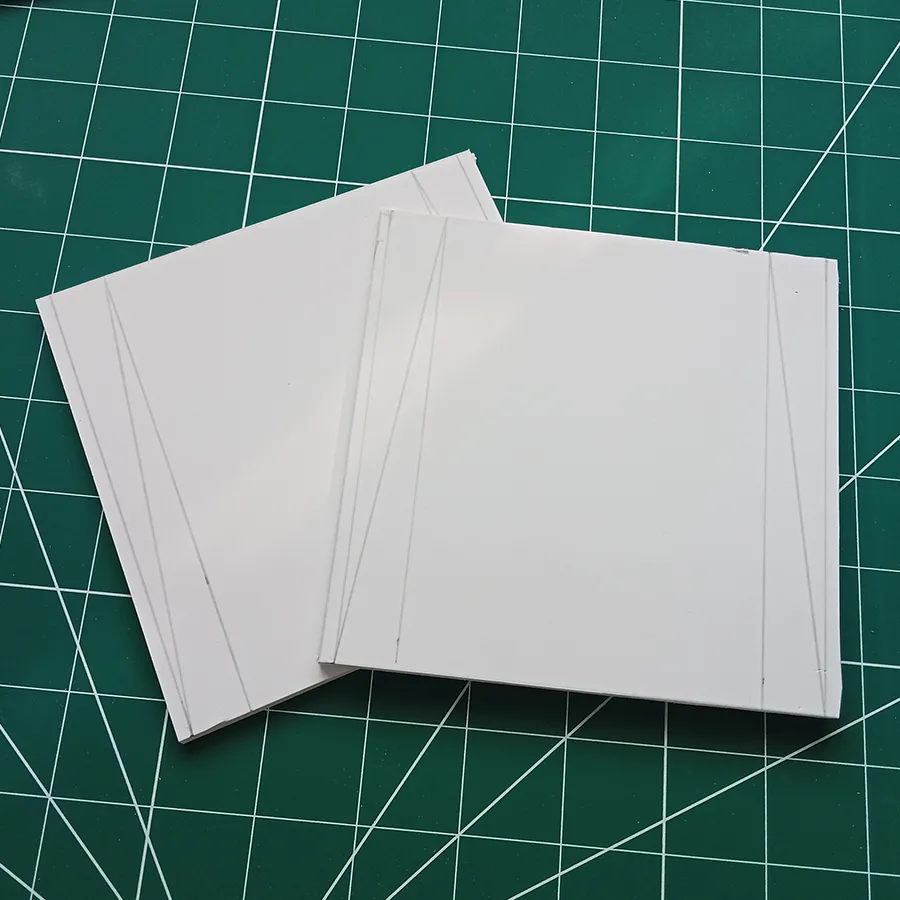
I created four side panels: two trapezoidal cut pieces and two square panels. Each square panel had matching trapezoidal guide lines, angled at 10 degrees, to construct a truncated pyramid structure.
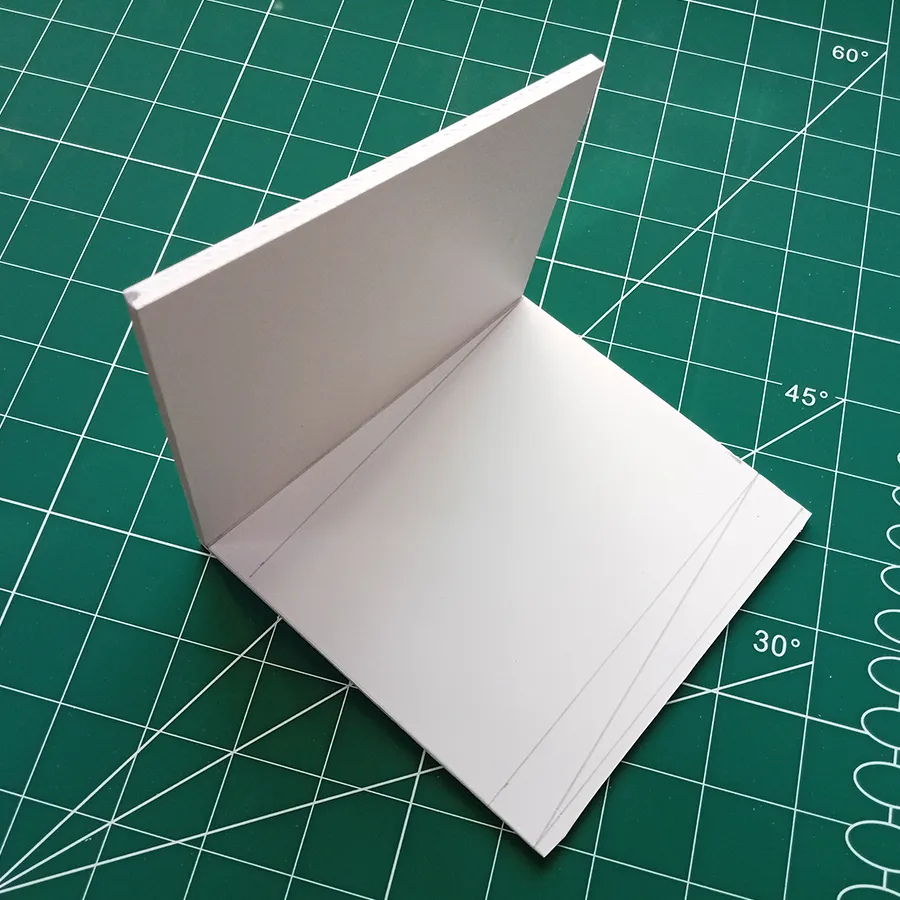
I secured the custom-cut trapezoidal panels to the square panels, aligning them precisely with the trapezoidal guide line. Careful alignment during attachment ensured the top and bottom edges matched evenly. For the molding process, I positioned the pot mold upside down on the base to cast the cement. This approach resulted in sharp, polished surface finishes and clean edges at the top of the pot after curing.
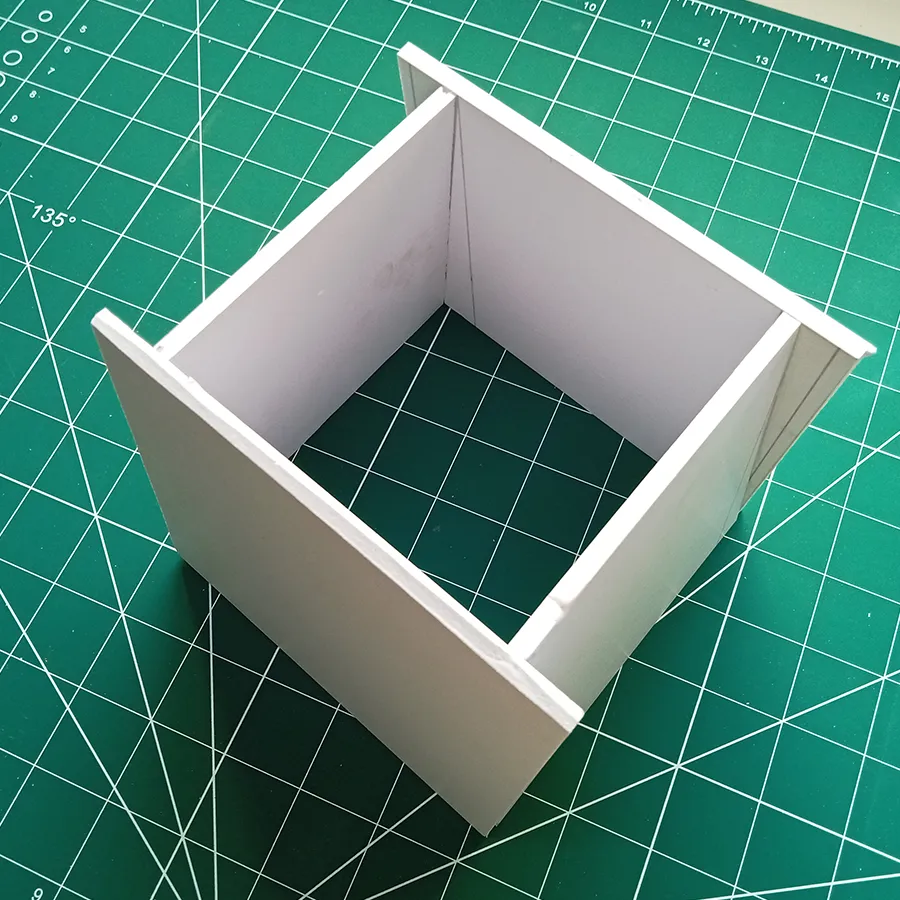
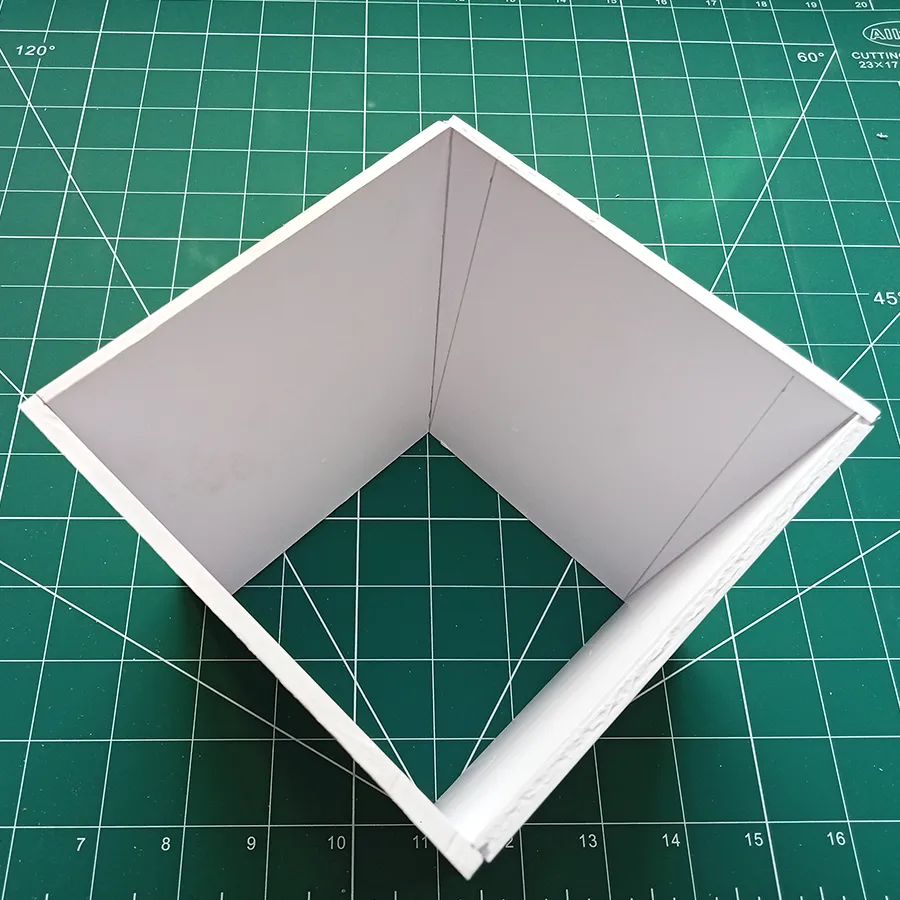
Bottom and top views of the outer truncated pyramid structure.
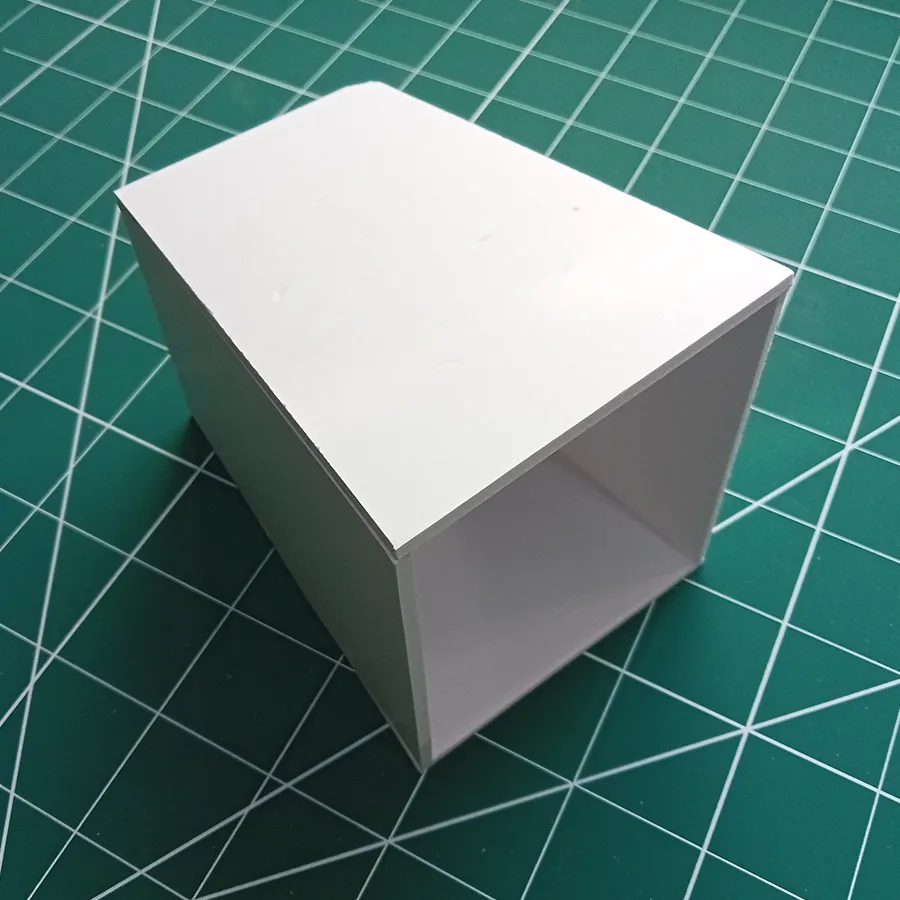
I created an inner truncated pyramid structure using 2mm foam board, making its width 2 cm shorter and its height 3 cm shorter than the outer truncated pyramid. This design ensures a 2 cm thickness for the pot and a 3 mm thickness for the base.
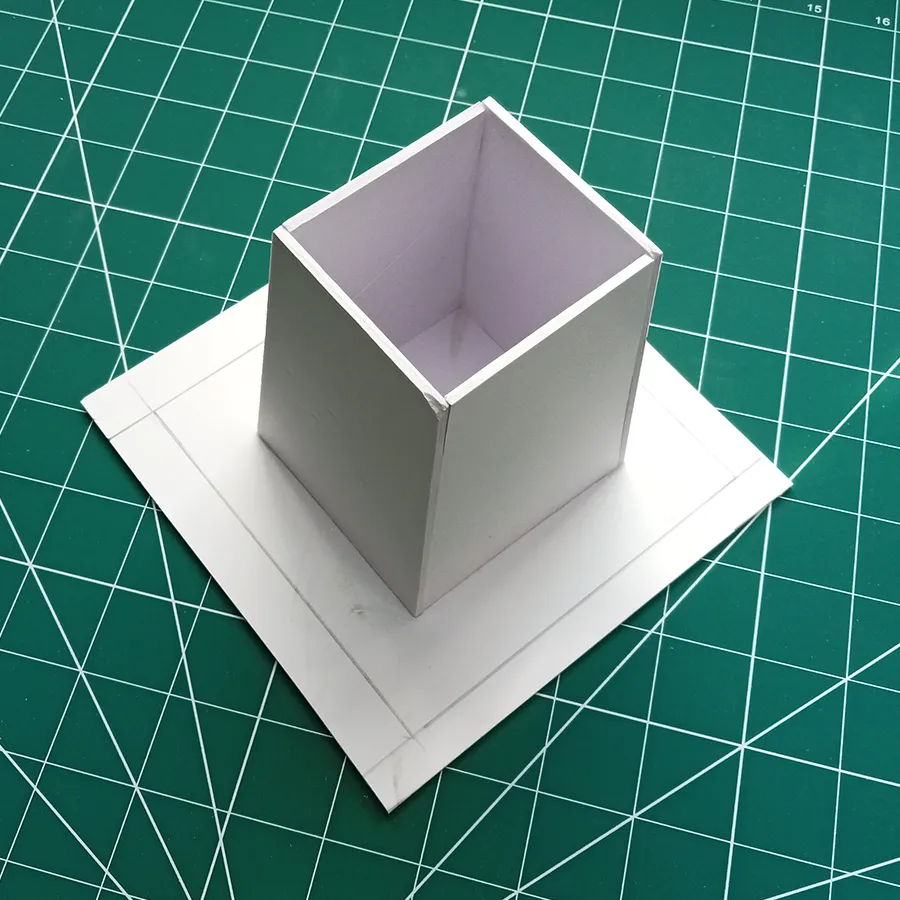
I marked the outlines for both the inner and outer panel positions on the base and attached the inner panels first. It’s important not to attach the foam sheets too firmly, as this would make disassembly difficult after the cement paste cures.

The final step was attaching the outer truncated panels, and it is ready for the casting.
2. Tower designer pot
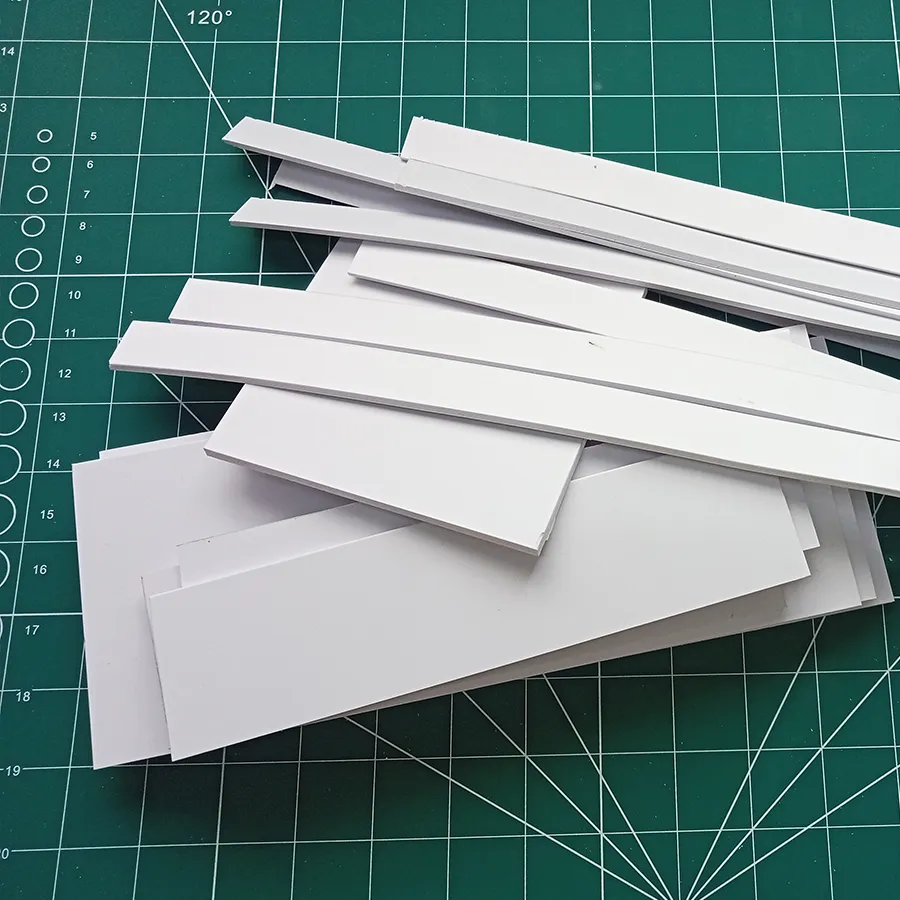
I custom-cut foam pieces to create a tall pot, using 4mm foam for the outer mold panel. To achieve a refined design, I chose 2mm foam for the strip pattern on the outer surface.
Making strip pattern on outer surface:

To create a striped pattern on the outer surface, I used 2mm thick foam. I cut the strips with both edges angled diagonally, which made it easier to remove them once the cement solidified.
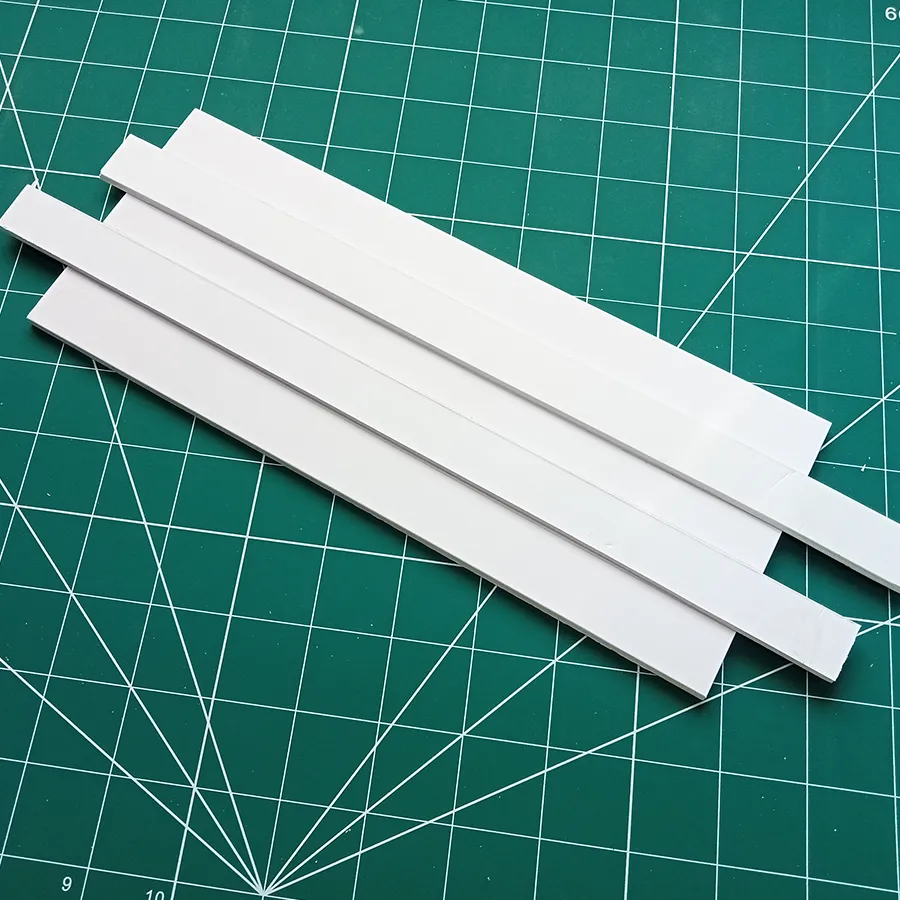
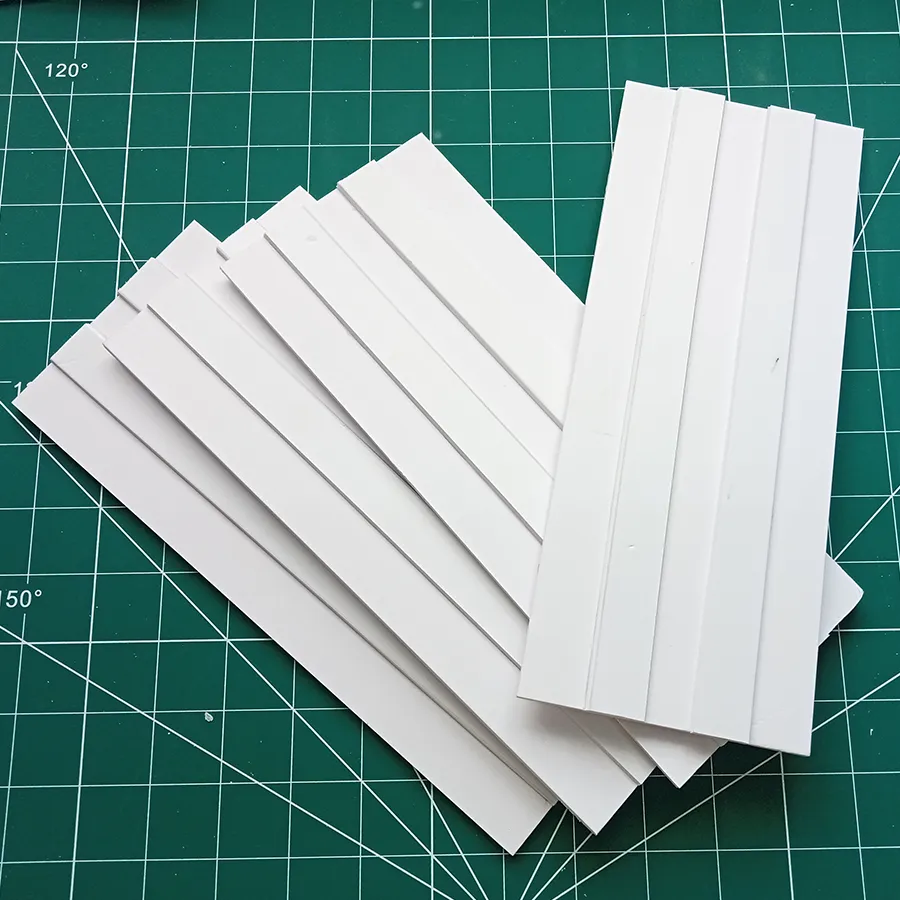
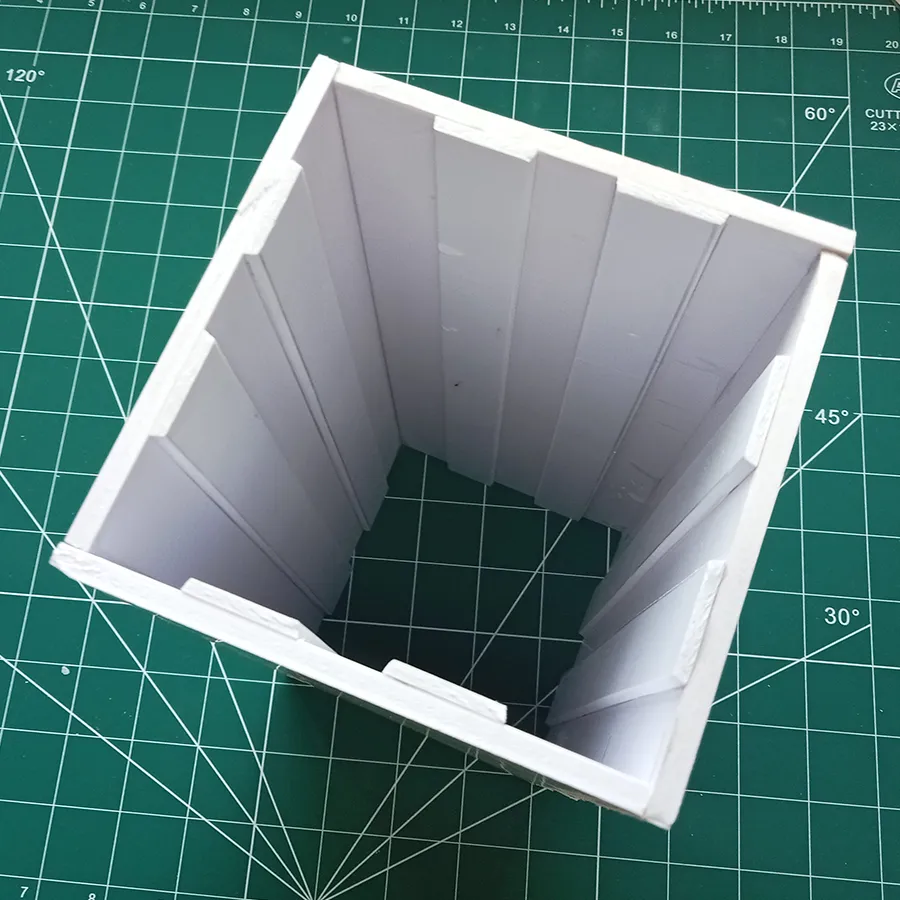
I attached the four panels together to create a tall rectangular tube, ensuring that the top and bottom edges of each panel were aligned evenly.
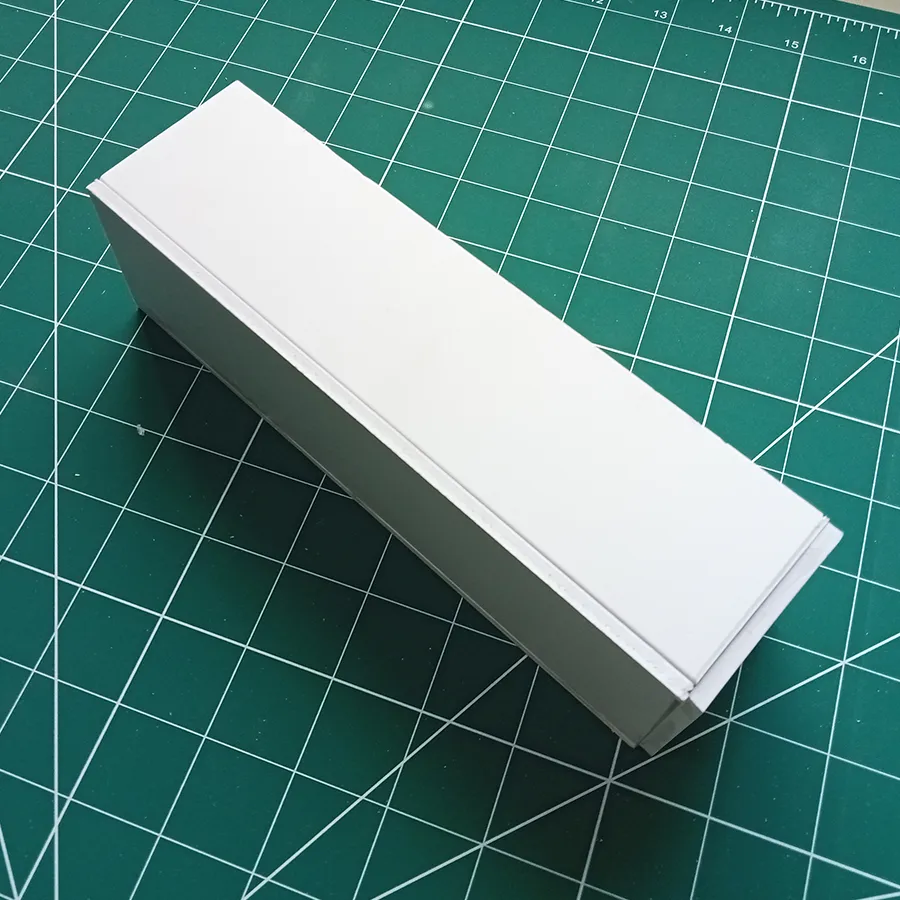
Next, I created an inner rectangular tube to form a cavity for casting. Its width is 2 cm, and its height is 4 cm shorter than the outer tube.
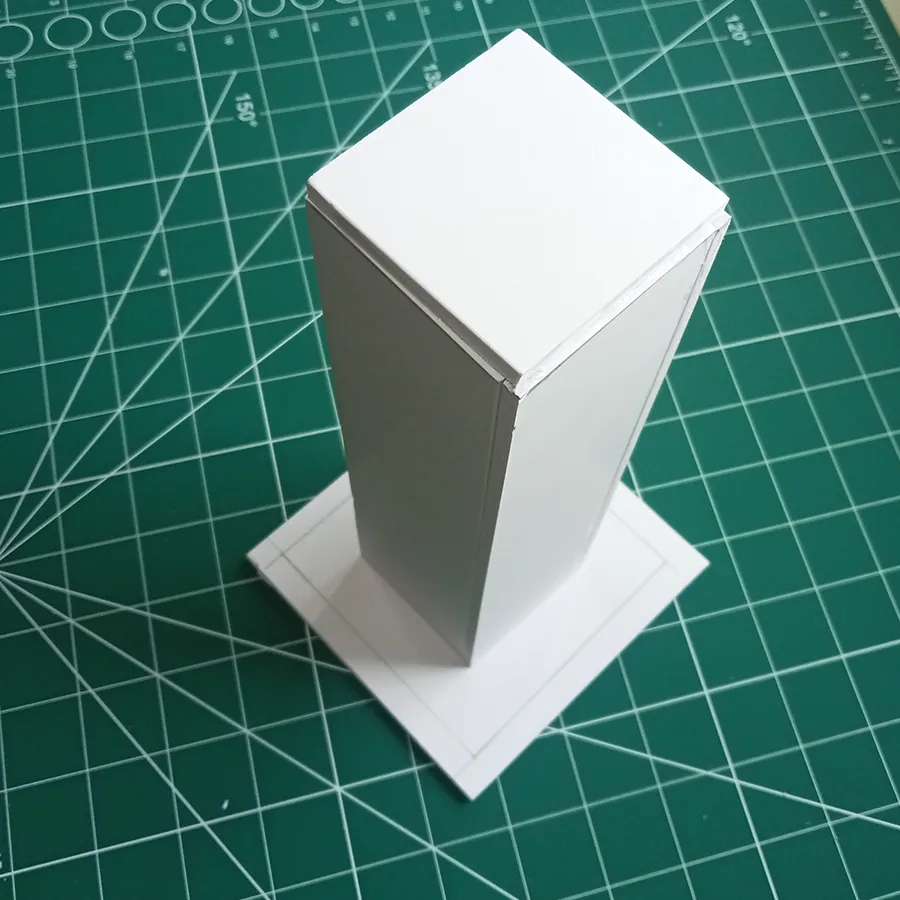

The inner rectangular tube is attached to the base, aligned with the markings; similarly, the outer tube is aligned with the outer markings and attached. It is now ready for the casting process.
3. Bluetooth speaker enclosure
Compared to the flower pot design, the speaker enclosure posed more challenges due to the need for mounting provisions for the speaker, circuit board, and battery. This complexity made the design process more difficult. To address this, I chose to use both 4mm and 2mm foam for construction, which allowed me to create a more precise and sturdy mold. This approach ensures a well-structured enclosure that effectively accommodates all the necessary components.
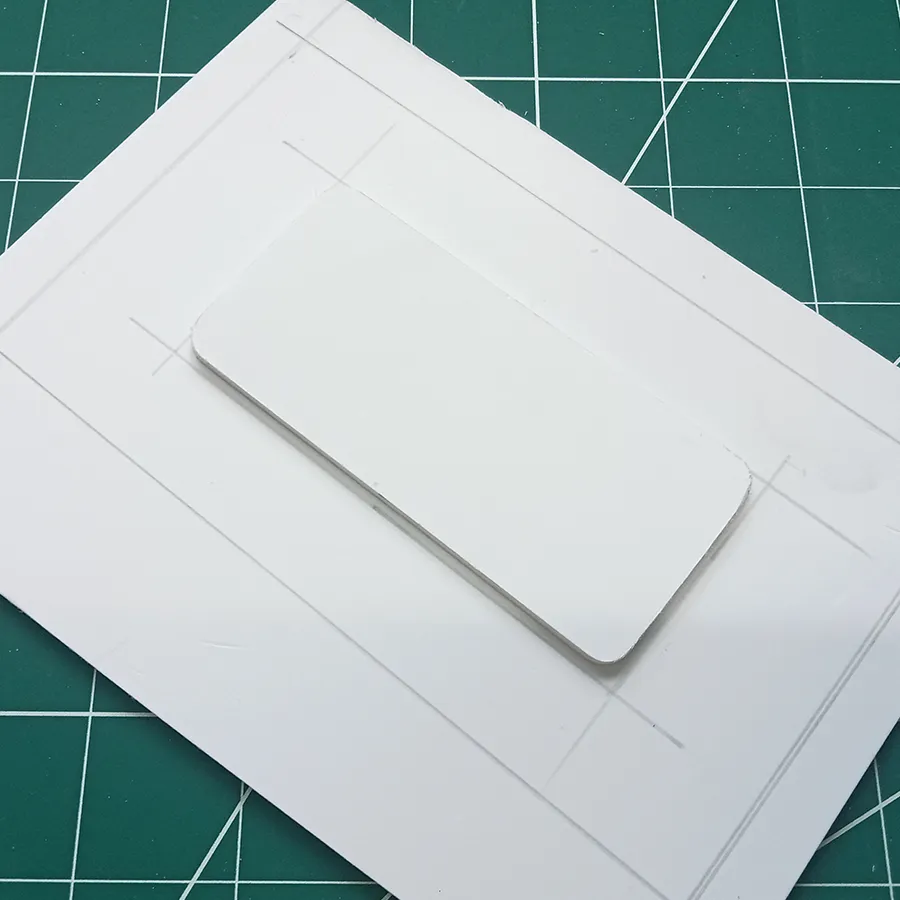
This base structure includes a provision for mounting the speaker panel onto the enclosure.
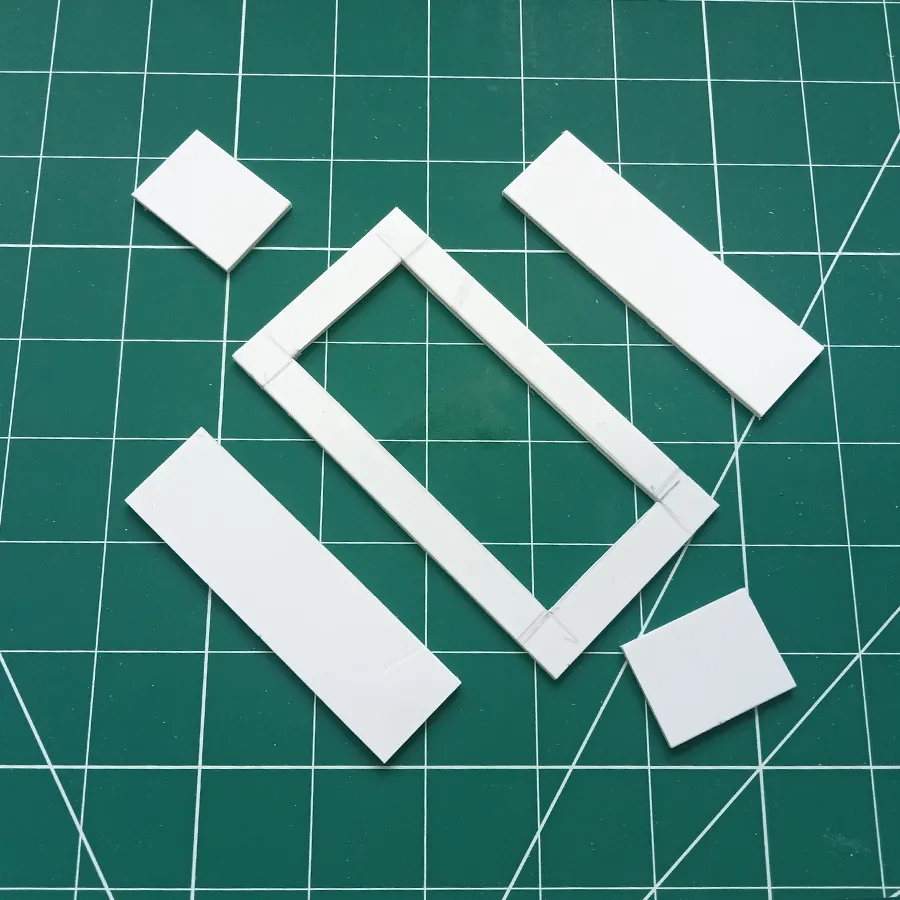
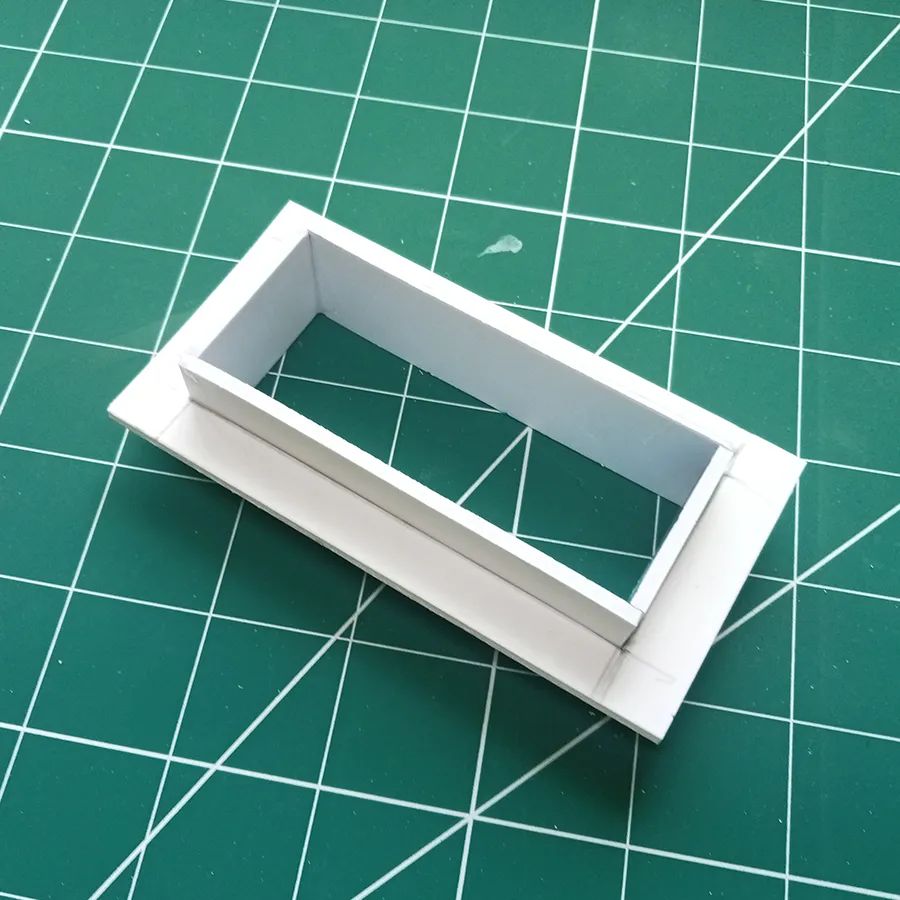
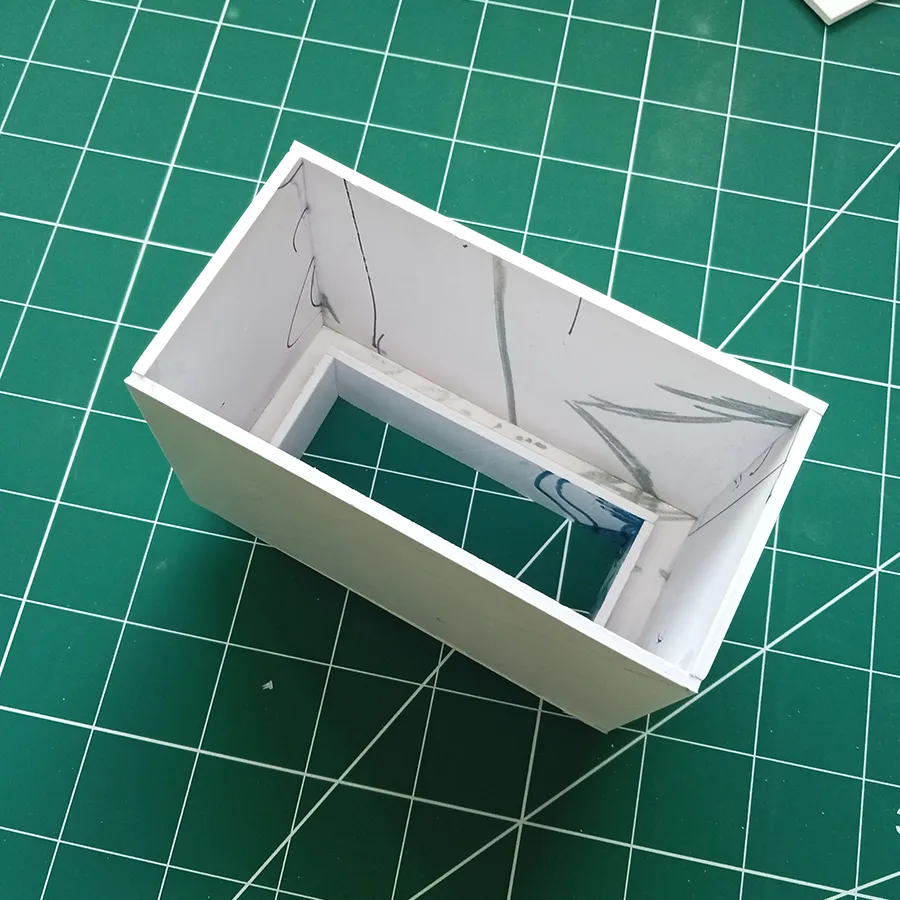
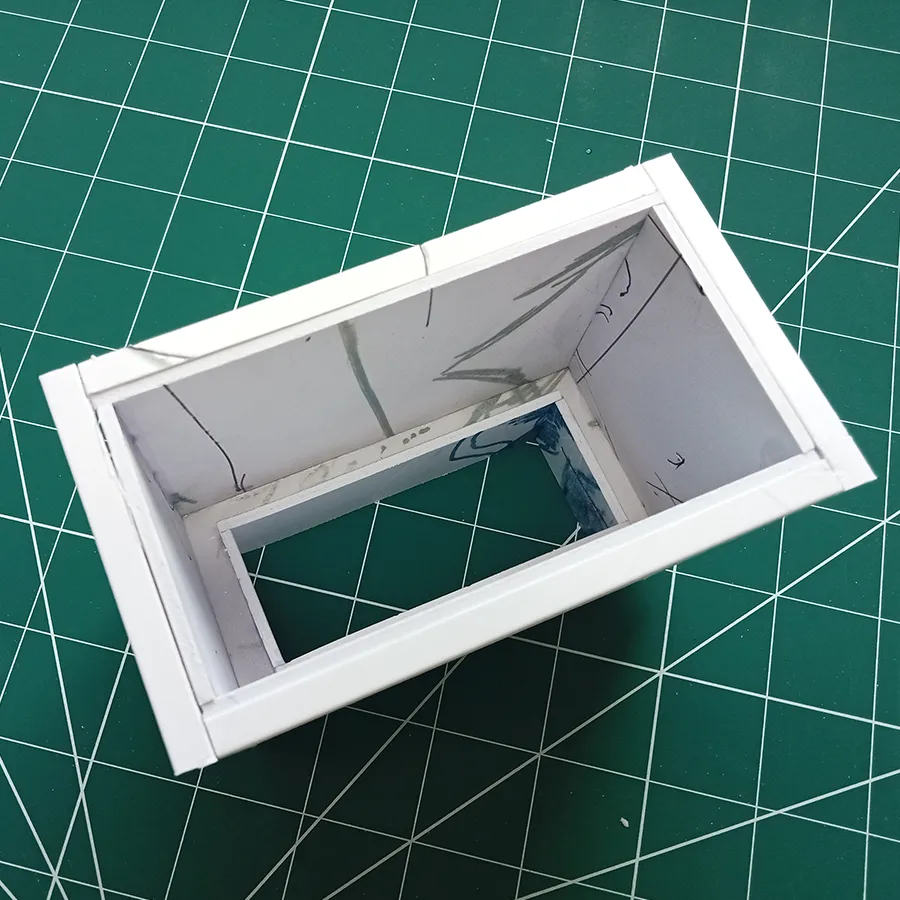
This structure is designed to create a hollow section on the front of the enclosure to house the speaker panel. Next, I attached a foam panel vertically to form the inner walls, followed by a horizontal 6mm strip to provide a mounting space for the back cover panel.


I then attached a 2cm high strip vertically over the above structure to create an extrusion.

Then I attached the completed above structure on to the base.
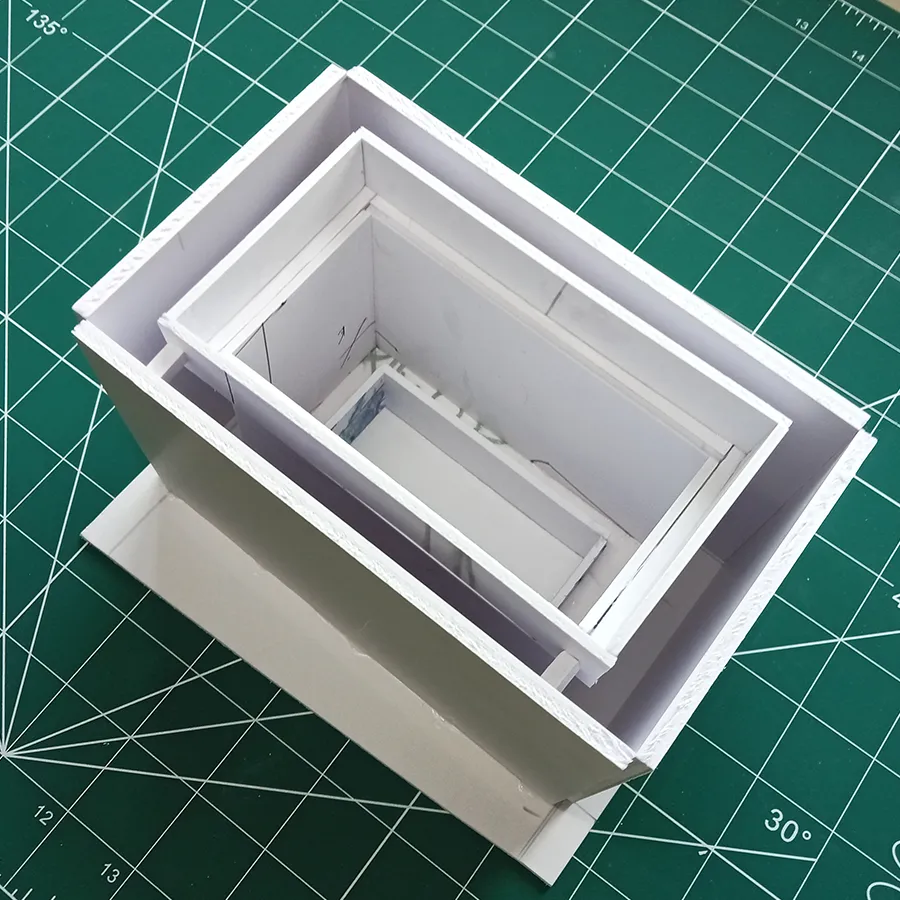
Completed structure ready for casting.









